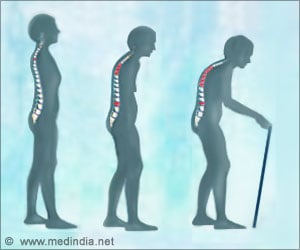Bones of diabetics and obese people are of a poor bone mass which make them more susceptible to bone fractures and osteoporosis.

‘Diabetes and Obesity are linked to reducing bone strength and increase the risk of bone fractures, but regular exercise can improve the bone mass and protect against such complications.’





"Researchers once thought obesity was protective of bone because with more body mass, individuals have more bone mass; more bone mass typically decreases risk of osteoporosis and associated fractures. What we've come to realize is that the bone of people with obesity and Type 2 diabetes isn't good, quality bone. These individuals have an increased risk of fractures, so that extra body weight isn't protective," said Pam Hinton, an associate professor in the MU Department of Nutrition and Exercise Physiology.Hinton and her colleagues examined how the development of obesity and Type 2 diabetes affect bone structure, formation and strength over time. They studied the bones of rats that had a predisposition to overeat, which caused the rats to gain weight and become insulin resistant. The rats were divided into two groups, where one group were made to overeat and exercise on running wheels while the other rats programmed to overeat remained sedentary. They had a control group of non-overeating rats that remained sedentary.
Researchers studied bones from rats in the three groups at different ages to determine how early in the development of obesity and diabetes the bone was affected negatively. They explained that this pattern of weight gain and insulin resistance parallels the development of obesity and Type 2 diabetes in humans.
They found that though all groups of rat increased their bone mass, rats which were obese, diabetic and sedentary had decreased bone formation, loss of bone mass and decreased bone strength. However, the rats that exercised did not lose bone strength. In fact, the rats that ran on the wheels had stronger bones than the normal-weight controls.
Researchers said that the study does not explain how exercise increased bone quality. They noted that the animals in the exercise group were healthier. They did not develop the same insulin resistance and diabetes, which might explain why the bones of the exercising rats were healthier.
Advertisement
Source-Medindia















